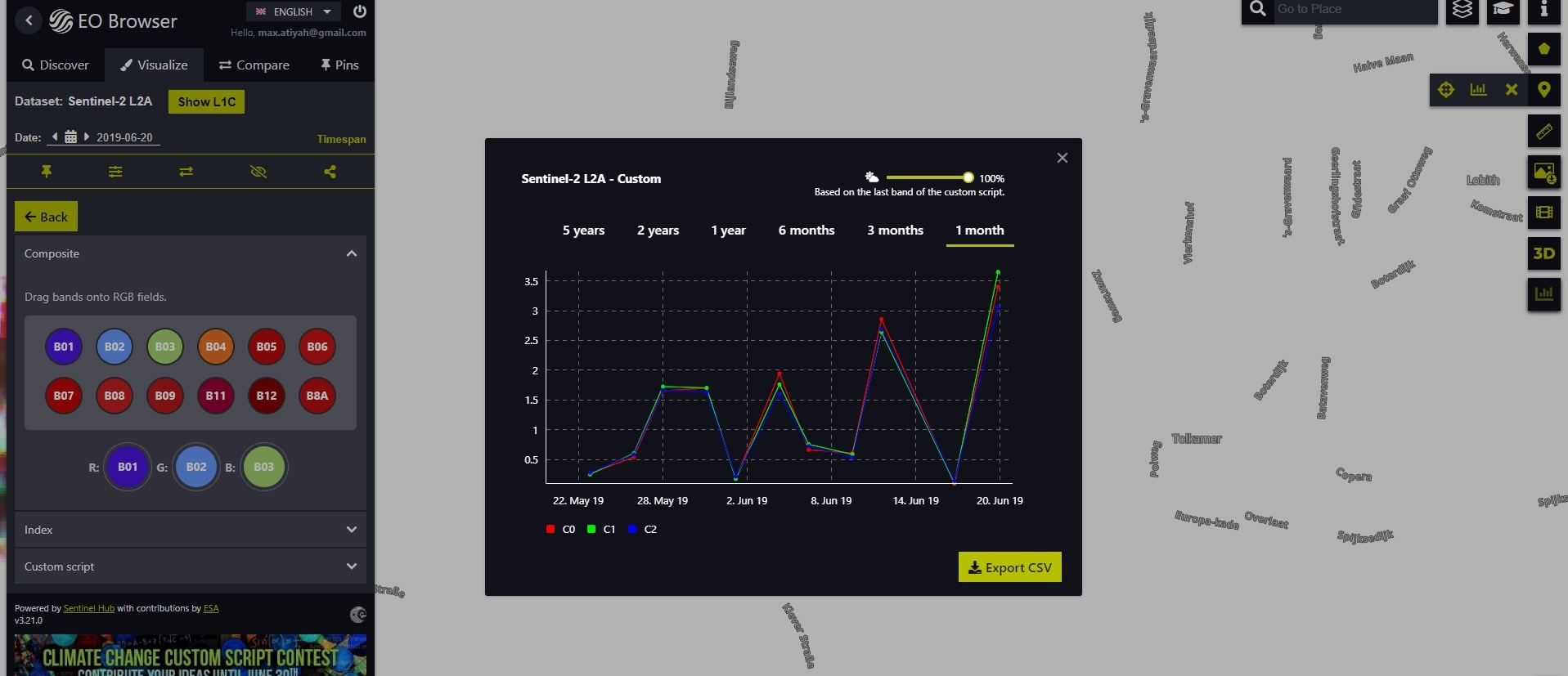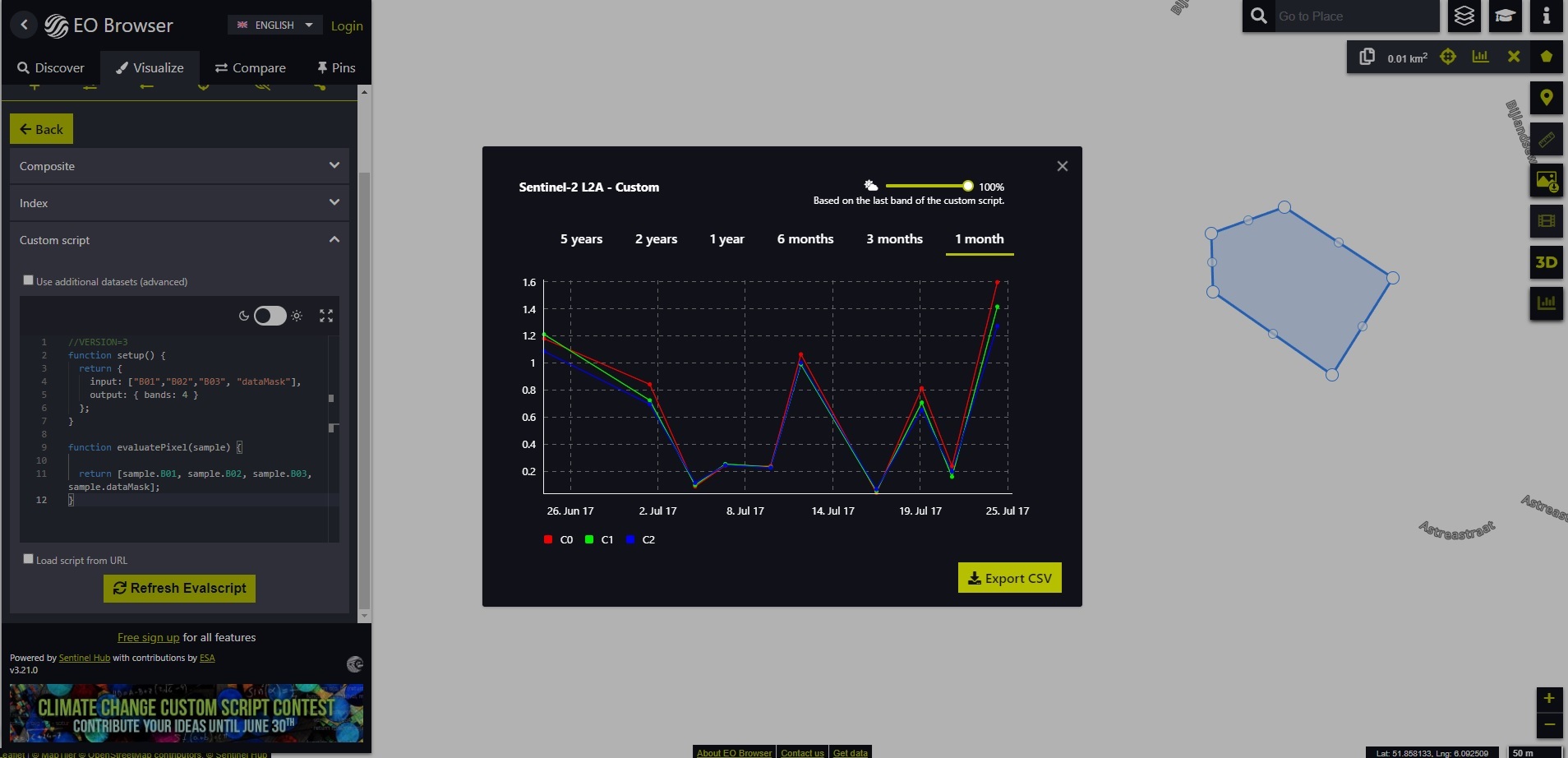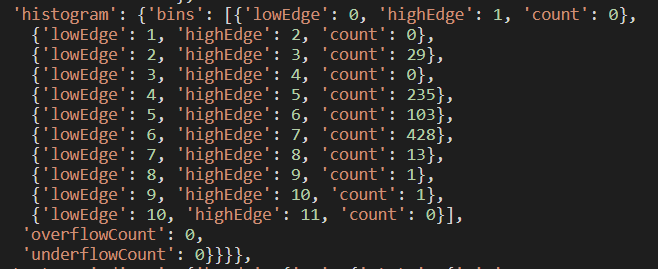Hi
I’m a beginner. In Eo-Browser, I made a polygon, then used a composite of three bands, then I used the (Feature Info Service Chart) to download the data as csv (attached screenshot)
My question is what is the unit of the data? Is it a [DN] or a reflectance value? I used the website interface with only these mentioned steps without any extra code
Greetings




